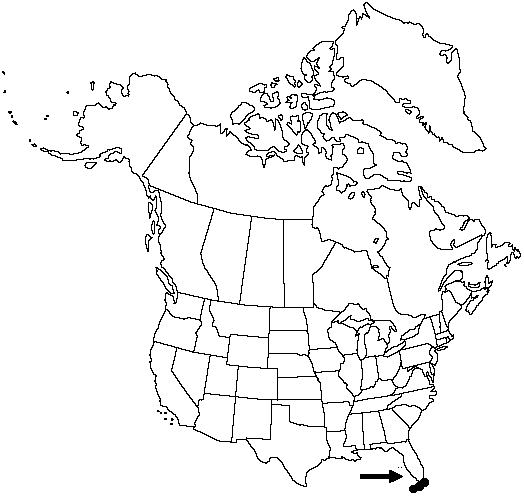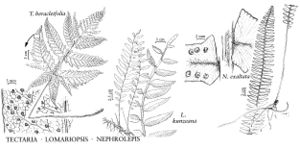Difference between revisions of "Lomariopsis kunzeana"
Bull. Misc. Inform. Kew 1939: 617. 1940.
FNA>Volume Importer |
FNA>Volume Importer |
||
| Line 20: | Line 20: | ||
}}<!-- | }}<!-- | ||
| − | --><span class="statement" id="st- | + | --><span class="statement" id="st-undefined" data-properties=""><b>Petiole </b>straw-colored, 3–12 cm, narrowly winged, base scaly. <b>Blade</b> oblanceolate, 7–25 × 3–6 cm, tapered toward base. <b>Rachis</b> winged throughout; wing ca. 0.5 mm wide. <b>Sterile</b> pinnae narrowly oblong to lanceolate, 3–6 × 1–1.5 cm, coarsely serrate, base cuneate. <b>Fertile</b> pinnae linear, ca. 3 mm wide.</span><!-- |
-->{{Treatment/Body | -->{{Treatment/Body | ||
| Line 49: | Line 49: | ||
|publication year=1940 | |publication year=1940 | ||
|special status= | |special status= | ||
| − | |source xml=https://jpend@bitbucket.org/aafc-mbb/fna- | + | |source xml=https://jpend@bitbucket.org/aafc-mbb/fna-data-curation.git/src/9216fc802291cd3df363fd52122300479582ede7/coarse_grained_fna_xml/V2/V2_320.xml |
|genus=Lomariopsis | |genus=Lomariopsis | ||
|species=Lomariopsis kunzeana | |species=Lomariopsis kunzeana | ||
| − | |||
| − | |||
| − | |||
| − | |||
| − | |||
| − | |||
| − | |||
| − | |||
| − | |||
| − | |||
| − | |||
| − | |||
| − | |||
| − | |||
| − | |||
| − | |||
}}<!-- | }}<!-- | ||
-->[[Category:Treatment]][[Category:Lomariopsis]] | -->[[Category:Treatment]][[Category:Lomariopsis]] | ||
Revision as of 13:17, 27 July 2019
Petiole straw-colored, 3–12 cm, narrowly winged, base scaly. Blade oblanceolate, 7–25 × 3–6 cm, tapered toward base. Rachis winged throughout; wing ca. 0.5 mm wide. Sterile pinnae narrowly oblong to lanceolate, 3–6 × 1–1.5 cm, coarsely serrate, base cuneate. Fertile pinnae linear, ca. 3 mm wide.
Habitat: Hammocks, limestone sinkholes
Elevation: 0 m
Distribution

Fla., West Indies in Cuba, Hispaniola.
Discussion
Plants from Florida differ from those of Cuba and Hispaniola by their smaller size and more deeply serrate sterile pinnae. Unlike all other species in the genus, the Florida plants rarely climb trees and freely produce fertile leaves from the terrestrial stem. According to James H. Peck (pers. comm.), the gametophytes of Lomariopsis kunzeana can often be found among the stem scales.
Selected References
None.
